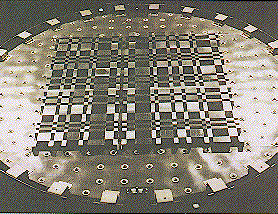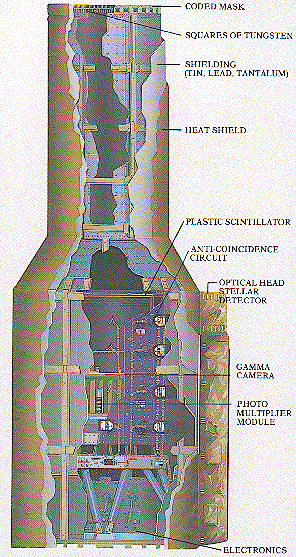

The SIGMA telescope is the main payload of the Soviet Granat satellite which is entirely devoted to high-energy astronomy and was launched in 1989. The instrument weighs about a metric ton and measures 1.2 m diameter at the base by 3.5 m height. SIGMA consists mainly of a coded mask, a position sensitive detector, various active and passive shielding devices needed to isotate it from background.

The coded mask is a pattern of gamma photon absorbing elements. It is made of squares of tungsten arranged in a pseudo-random pattern. These elements are bonded to a heneycomb plate that supports and stiffens the assembly without hindering the transparancy of the holes in the energy range being studied.
For more info, see J. Paul, Advances in Space Research, Volume 11, p (8)289 (1991) or the SIGMA html page at IKI.
 Go to general Coded Aperture Imaging page
Go to general Coded Aperture Imaging page
October 17, 1995